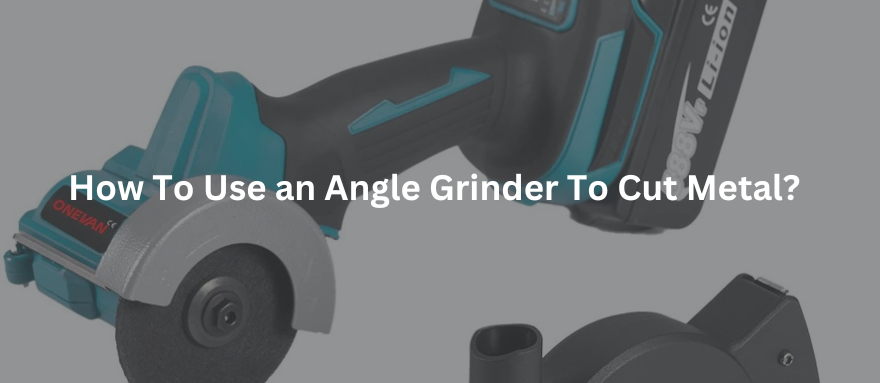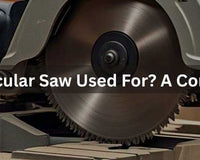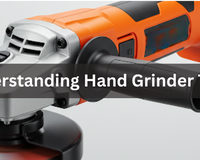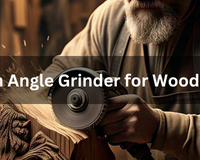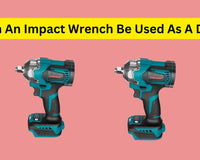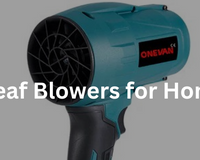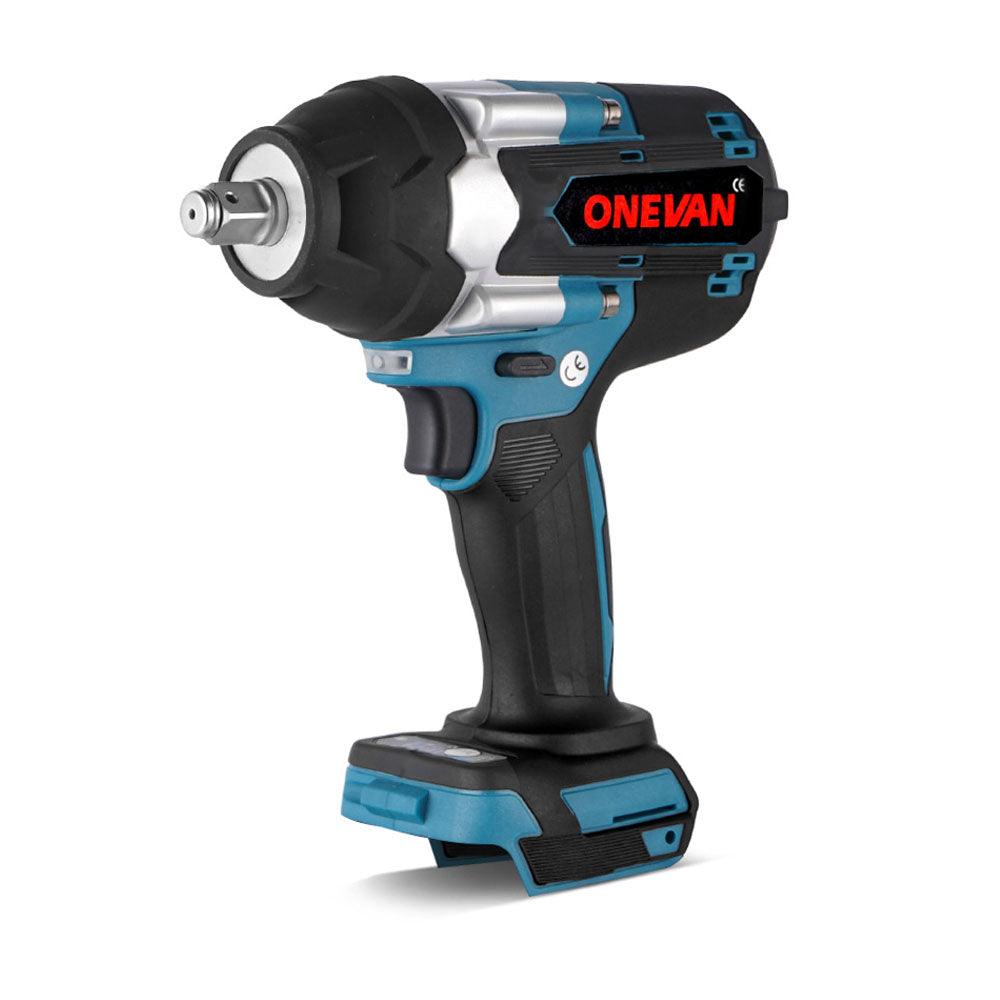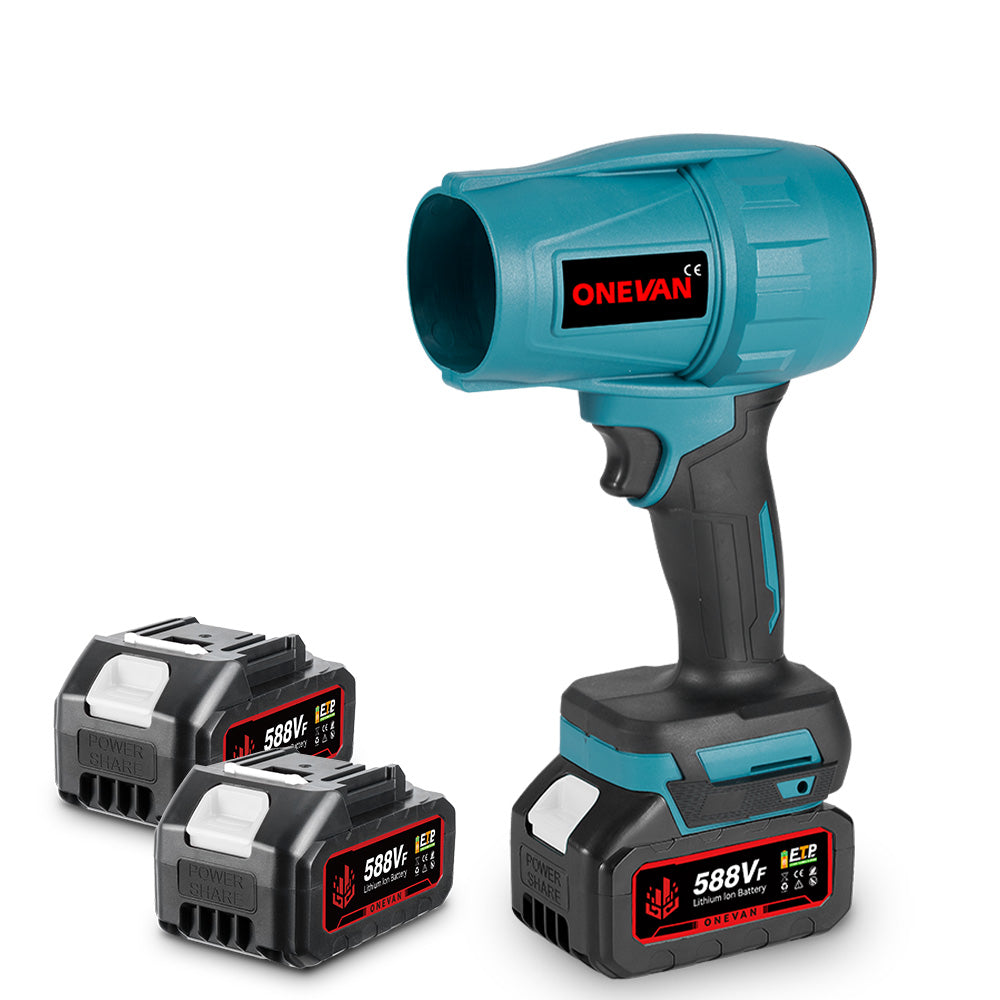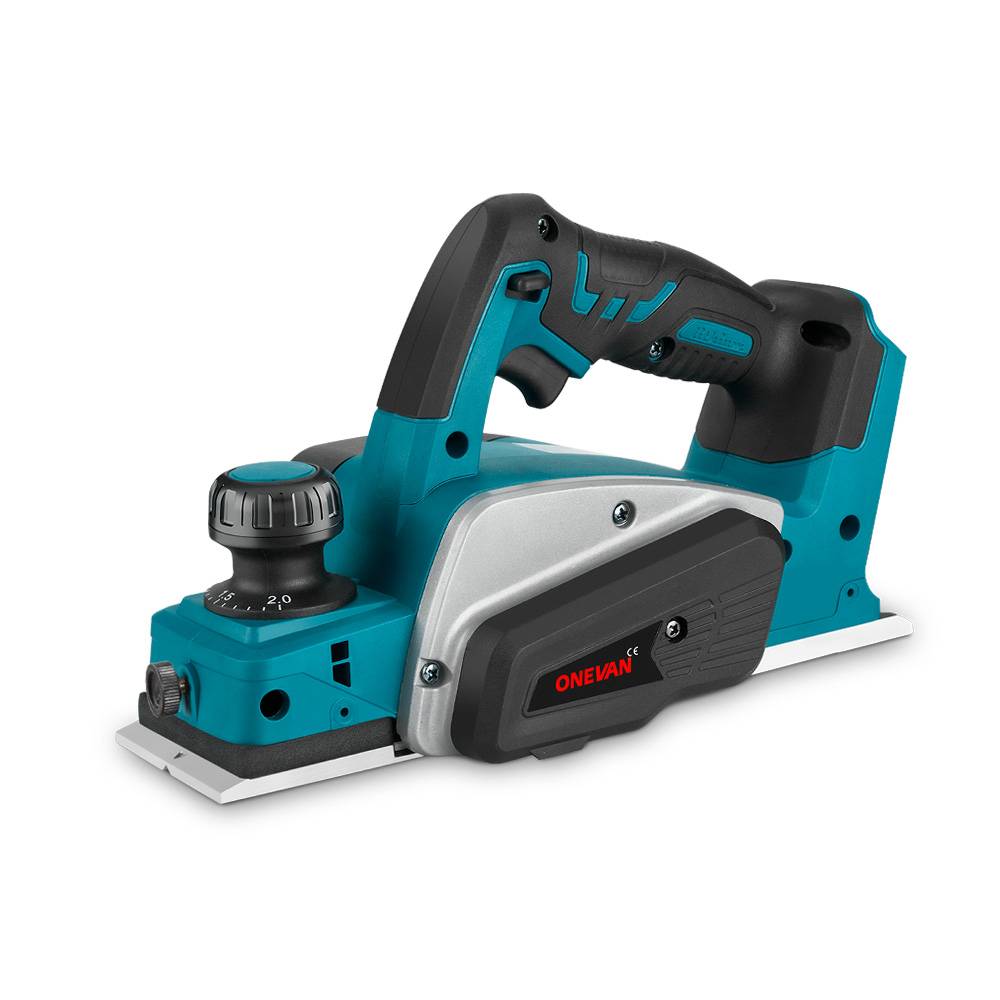An angle grinder is a power tool which is capable of effortlessly cutting through metal. However, proper wielding and safe use require adequate knowledge. This guide will take you from a beginner to an angle grinder pro.
What Will You Learn from This Article?
- How to cut metal with an angle grinder?
- Choosing the right blade.
- Essential safety gear and workspace preparation.
- Step-by-step cutting process.
- Advanced techniques.
- Common pitfalls and solutions.
After reading this guide, you will be confident to use an angle grinder for metal cutting projects. Let’s get started.
1. Why Use an Angle Grinder to Cut Metal?
Angle grinders are indispensable power tool for metal cutting for several reasons. Each will be discussed below:
Versatility
Power
Efficiency
2. What Angle Grinder Blade Cuts Metal?
To make any metal cutting job successful, choosing the right blade for your angle grinder is the first step. There are different blades which fit in different situations. Let’s study each briefly:
Types of Metal Grinder Blade Profiles
Type 1:
This is the most common profile for cutting discs used on angle grinders. It features a flat center with a slight depression for secure mounting onto the grinder's flange.
Type 5:
It has a slightly raised center for good strength and stability. Type 5 blades are often used for heavy-duty cutting applications.
Type 27:
This recessed center profile is designed for grinding wheels, not for cutting. They're considered best for shaping and smoothing metal surfaces.
Type 27R:
It is an improved version of Type 27. This raised center offers extra strength for heavy-duty grinding projects.
Type 41:
This profile features a flat center with a nut and washer mounting system. It is commonly used for cutting applications with angle grinders.
Metal Grinder Blade Materials

Now, let's read about the different blade materials. Each material comes with strengths and weaknesses:
Abrasive Cutting Discs:
Abrasive cutting discs are made with a bonded abrasive grit, typically aluminum oxide. They're affordable and effective for most mild steel-cutting jobs. However, they can produce significant heat and sparks. Subsequently, they wear down quickly.
Diamond Cutting Discs:
Diamond cutting discs come with a diamond-impregnated rim.These discs offer excellent speed and provide cleaner cuts on metals like stainless steel and hard alloys. However, they are expensive.
Carbide Cutting Discs:
Carbide discs incorporate tungsten carbide grit. It is both cost-effective and delivers optimum performance. They offer faster cutting than abrasive discs. Handling tough materials is easy for these discs.
Stainless Steel Cutting Discs:
Stainless steel cutting discs are manufactured and designed for a range of stainless steel alloys. For example, 304 and 410 stainless steel alloy with thicker depth. They have abrasives designed to minimize heat and discolouration during the cutting process.
Aluminum Oxide Flap Discs:
Flap discs carry overlapping abrasive cloth flaps. These are bonded to a backing plate. You can use this disc for grinding, smoothing, and deburring metal.
To accelerate your angle grinder performance, consider ONEVAN's Aluminum Oxide Cutting Discs:
Aluminum Oxide Cutting Discs:
This disc is best for separating metal pieces and creating desired shapes with greater precision. Aluminum oxide cutting discs feature high-quality aluminum oxide abrasive grains bonded to a cloth backing, the ONEVAN Aluminum Oxide Cutting Discs offer robust efficiency for different applications.
Angle Grinder Blade Thickness
What angle grinder blade cuts metal? There are three types of blades which can be incorporated according to metal thickness.
Thin Blades (1/16 inch or about 1.6 mm): These are ideal for complex cuts and tight spaces. They offer superior maneuverability. However, they have a shorter lifetime.
Standard Thickness Blades (1/8 inch or about 3 mm): These blades have following characteristics. Such as depth, stability, and blade life. They're perfect for most general-purpose metal-cutting projects.
Thicker Blades (3/16 inch or about 4.5 mm and above): These are heavy-duty blades which are best for maximum stable cutting. Similarly, these discs are good for thick metals. However, they generate more heat due to the increased friction.
3. How to Cut Metal With an Angle Grinder?
Step 1: Gather Important Equipment and Materials
Before you start the metal cutting process, you need to collect the following tools:
- An angle grinder with sufficient power.
- A metal cutting blade compatible with the angle grinder.
- Essential personal protective equipment such as safety glasses, a face shield, hearing protection, gloves.
- Clamps or a vise to hold the metal.
- Measuring tools, such as a tape measure to make the cutting line.
- A good work surface is necessary for the operation.
Step 2: Preparing the Work Environment
- You should have planned adequate ventilation.
- Do not forget to buy a fire extinguisher.
- It is very important to make your work area free from obstructions and flammable materials.
Step 3: Marking the Cut Line
Precisely mark the cutting line on the metal workpiece. You can use a marker or scribe for this purpose.
Step 4: Securing the Metal Workpiece
It is essential to control the movement of the metal workpiece. Therefore, you should secure the metal workpiece using clamps or a vise.
Step 5: Installing the Cutting Blade
Install the cutting blade to the angle grinder following tasks requirements. Similarly, the angle grinder's protective guard must be in place and properly adjusted.
Step 6: Begin the Cutting Process
A firm grip on the angle grinder with both hands is important. Now, apply a gentle and steady pressure to the workpiece. Guide the grinder along the marked cutting line. You need to avoid abrupt movements.
Step 7: Completing the Cut
Continue the cutting process until the blade fully penetrates the metal. Avoid excessive force to prevent blade breakage..
Step 8: Workspace Cleanup
Upon completion, thoroughly clean the workspace, removing metal shavings, dust, and debris. Inspect the angle grinder and cutting blade for any damage before storing them. .
4. Metal Cutting Techniques

You have understood the basics of metal cutting techniques with an angle grinder. Let’s read further.
How to Cut Metal Straight with an Angle Grinder
To achieve a straight cut with an angle grinder, precision is compulsory. How?
- Use a ruler or straightedge and a marker to create a straight guideline.
- Ensure the metal is firmly clamped to stop sudden movement during working.
- Hold the grinder firmly with both hands, keeping your arms extended for better control.
- Move the grinder at a steady, consistent speed along the marked line. However, you need to avoid sudden accelerations or decelerations.
- Like any new activity, cutting straight lines demands a lot of practice. Don’t worry if you fail in making initial straight lines.
How to Cut Metal Curved with an Angle Grinder?
- Mark the curve on the metal beforehand to visualize the cut.
- If possible, create a physical guide for the grinder to follow.
- Move the grinder smoothly and gradually along the curve for precise and clear cuts.
- Make several passes for deeper cuts or tighter curves.
How to Cut Metal Holes with an Angle Grinder
Cutting holes with an angle grinder can be tricky but doable. Here's a basic approach:
- Use a center punch to mark the center of the desired hole.
- Begin with a small pilot hole to guide the blade.
- Gradually increase the hole size by making overlapping cuts.
- Wearing a face cover will help you in protecting yourself from flying sparks and metal chips.
To use an angle grinder to cut metal, start by choosing the right grinder and blade according to your project needs. Always wear the necessary safety gear. The next step is to select the suitable cutting disc and clamp the workpiece. After marking the cutting line, you need to maintain a firm grip and apply a gentle pressure following the cutting line.
5. Common Mistakes When Cutting Metal With an Angle Grinder
Even the most experienced DIYers and professionals can make mistakes. Here is a list of common errors people make when cutting metal with an angle grinder. Also, read their solutions.
Safety equipment: Generally, people tend to ignore this fundamental point. They overlook safety gear before using an angle grinder. Wear safety glasses, a face shield, hearing protection, gloves, and long-sleeved clothing.
Using the Wrong Blade: Using blades that are not made for cutting metals may result in kickback injuries. Always pick the right thickness and type of blade according to the metal.
Overloading the Grinder: Trying to cut too much metal at once can burn out the motor, damage the blade, and cause kickback. Take your time and execute in multiple passes.
Not Securing the Workpiece: Failure to hold down your moving workpiece will lead to disaster. Always clamp the metal before cutting.
Incorrect Blade Installation: The most dangerous thing ever can be a blade that wobbles in its mountings. Tighten it following the manufacturer’s instructions.
Neglecting Sparks: Sparks can lead to a bigger accident. They can ignite flammable materials around you. It is important that your working area should be free of obstructions.
Cutting Towards Yourself: This is a major safety risk. Make sure you cut away from yourself at all times.
Overheating the Blade: Overheating weakens blades causing them break under load eventually. Allow the blade to cool down periodically, especially when dealing with thick metals.
6. Applications of Different Types of Angle Grinders in Metal Cutting
For metal cutting with an angle grinder, use of correct angle grinder is crucial. Below, you will read the different types of angle grinders along with their applications.
Air Angle Grinders
Shipbuilding: Air angle grinders are used for grinding and finishing welds, removing rust and scale from metal parts.
Automotive manufacturing: You can also deburr metal parts, remove weld spatter, and prepare surfaces for painting..
Aerospace industry: Grinding and polishing metal parts, removing burrs and imperfections. .
Heavy equipment repair: Removing rust, grinding welds, and preparing surfaces for welding.
Corded Electric Angle Grinders
Metalworking
- Cutting: Severing metal components into desired shapes and sizes.
- Grinding: Removing excess material, deburring edges, and preparing surfaces for welding or finishing.
- Polishing: Achieving a smooth and shiny finish on metal surfaces.
- Sharpening: Maintaining the edge of tools like chisels and axes.
Cordless Electric Angle Grinders
Automotive and Motorcycle Customization- Exhaust pipe fabrication: Cutting and shaping exhaust system pipes
- Chassis modification: Modify vehicle structure.
- Custom parts creation: Fabricating brackets, and mounts.
- Metal roofing installation: Cutting and shaping metal roofing panels.
- HVAC system installation: Cutting and fitting ductwork.
- Metal sculpture and art: Creating complex metal designs and forms.
- Demolition: Removing metal reinforcements from concrete.
- Shipbuilding and repair: Cutting and shaping metal plates for hull construction.
- Agricultural equipment repair: Cutting and shaping metal components for repairs.
- Industrial machinery maintenance: Removing damaged parts and fabricating replacements.
- Home repairs: Cutting metal for fence repairs, gate modifications, or plumbing adjustments.
- Metalworking projects: Cutting and shaping metal for metal working projects.
- Jewelry making: Cutting and shaping metal for customized jewelry pieces.
- Model building: Cutting and modifying metal components for model kits.
ONEVAN 76mm Brushless Electric Cordless Angle Grinder is equipped with a powerful 390W motor. This angle grinder cordless can cut through different types of materials with an RPM of up to 20,000. Additionally, its infinitely adjustable speed control makes it very versatile, and it can cut materials up to 13.5 mm in size. The safety features include an LED light and a protective dust shield.
7. Conclusion
Metal cutting tasks require skill, practice, and the right power tool. In this article, you have gone through the basic and advanced techniques to cut different types of metals. Also, we have provided a brief overview of different angle grinder blades for cutting metal. It is recommended to choose a suitable angle grinder based on your specific project requirements.
8. FAQs
1. How to Cut Metal Roofing with an Angle Grinder?
To cut metal roofing with an angle grinder, follow these steps:
2. What is the Best Type of Blade for Metal on an Angle Grinder?
There are different types of metals with variation in sheet thickness. However, a diamond blade specifically designed for metal is often the best choice. Diamond blades are a good choice for durable and cleaner cuts. Subsequently, you can use them for harder metals like iron and steel.
3. How to Cut Sheet Metal with an Angle Grinder?
4. Best Disc for Cutting Metal with an Angle Grinder:
5. Angle Grinder vs. Sander:
6. Materials an Angle Grinder Can not Cut:
7. How to Cut Sheet Metal Straight with Angle Grinder?
To cut sheet metal straight with an angle grinder, securely clamp the sheet metal and use a straight edge for the clear cutting line. You need to ensure that the cutting disc is perpendicular to the metal. Apply consistent pressure along with the marked line. Avoid rushing for longer cuts and regularly inspect the cutting disc.

